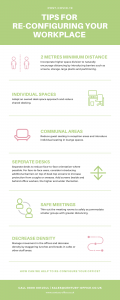The supermarket is taking advantage of the pandemic-driven shift to home working by partnering with office landlord and flexible workspace provider IWG to convert the 3,800 sq ft upper mezzanine of the Tesco Extra store in New Malden.
The space will contain 12 desks, 30 co-working spaces and a meeting room. It is to be opened to businesses and individuals who join the IWG platform – including shoppers wishing to catch up on some emails – from this month.
The tie-up is expected to see excess space in more Tesco stores converted to flexible offices.
IWG said its research demonstrated the ongoing popularity of hybrid working. It found 72% of workers would prefer the long-term ability to work flexibly over going back to the office five days a week with a 10% pay rise.
IWG claims to be “leading the workspace revolution”. Its recently launched ‘OpenDesks’ are designed for retail-based office space and use magnetic screens to create privacy.
IWG operates 300 flexible offices across the UK and is set to open sites this year in south London’s Twickenham, Sutton and the revamped Battersea Power Station. Each of its workspaces can be accessed by downloading its mobile app.
New locations in suburban areas will transform communities and are a response to the growing demand we are seeing from customers who want to live and work locally.

